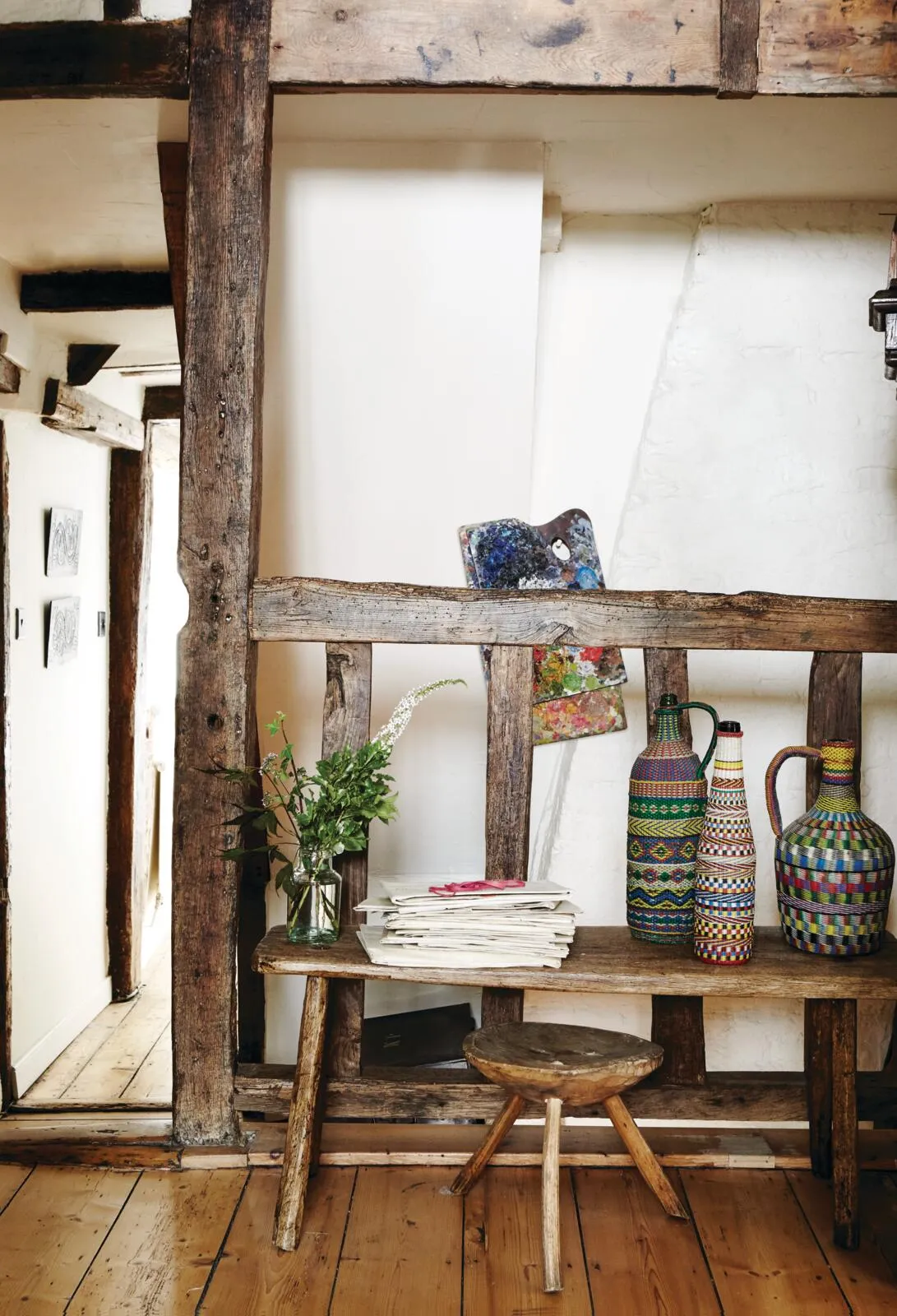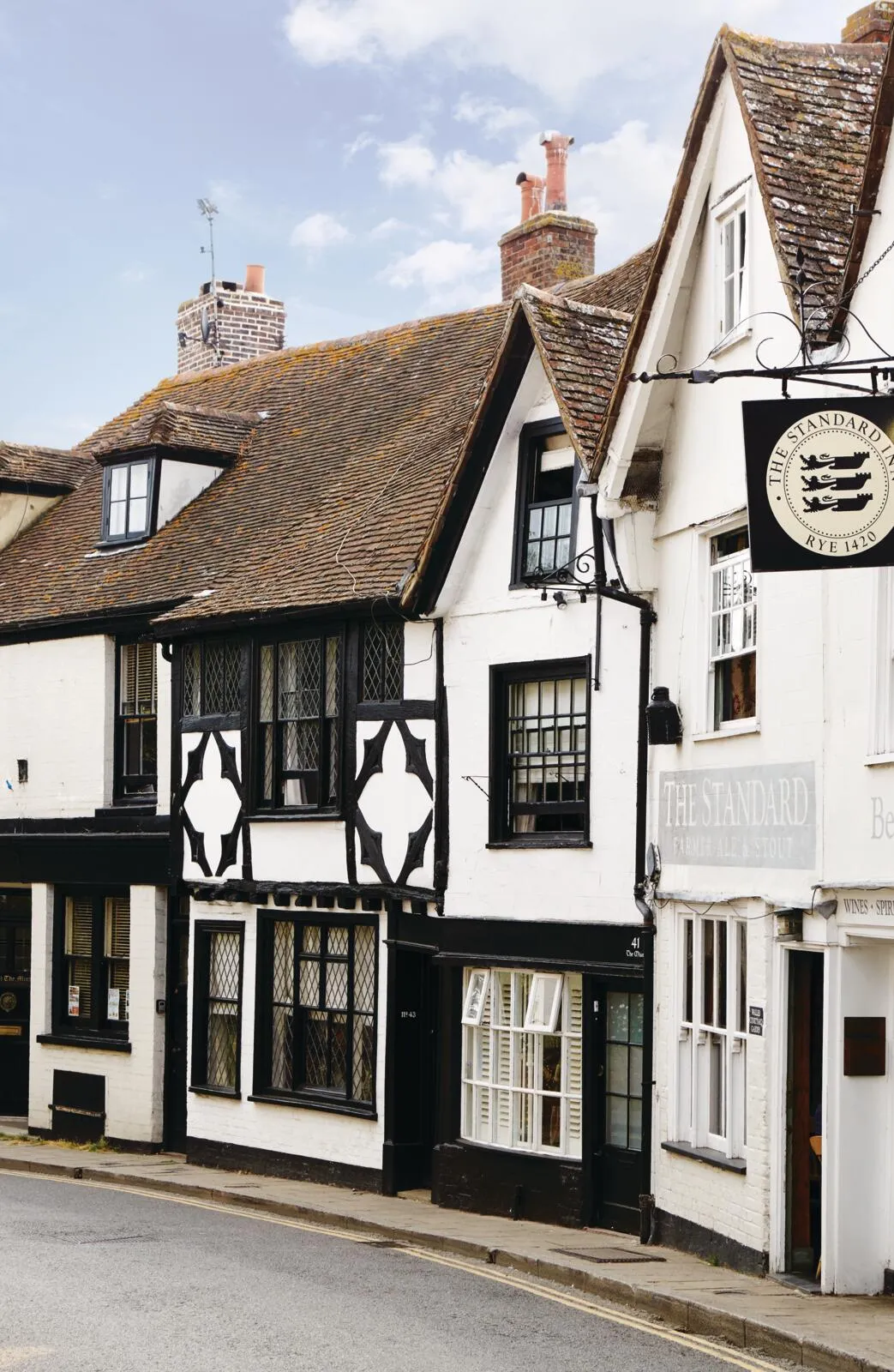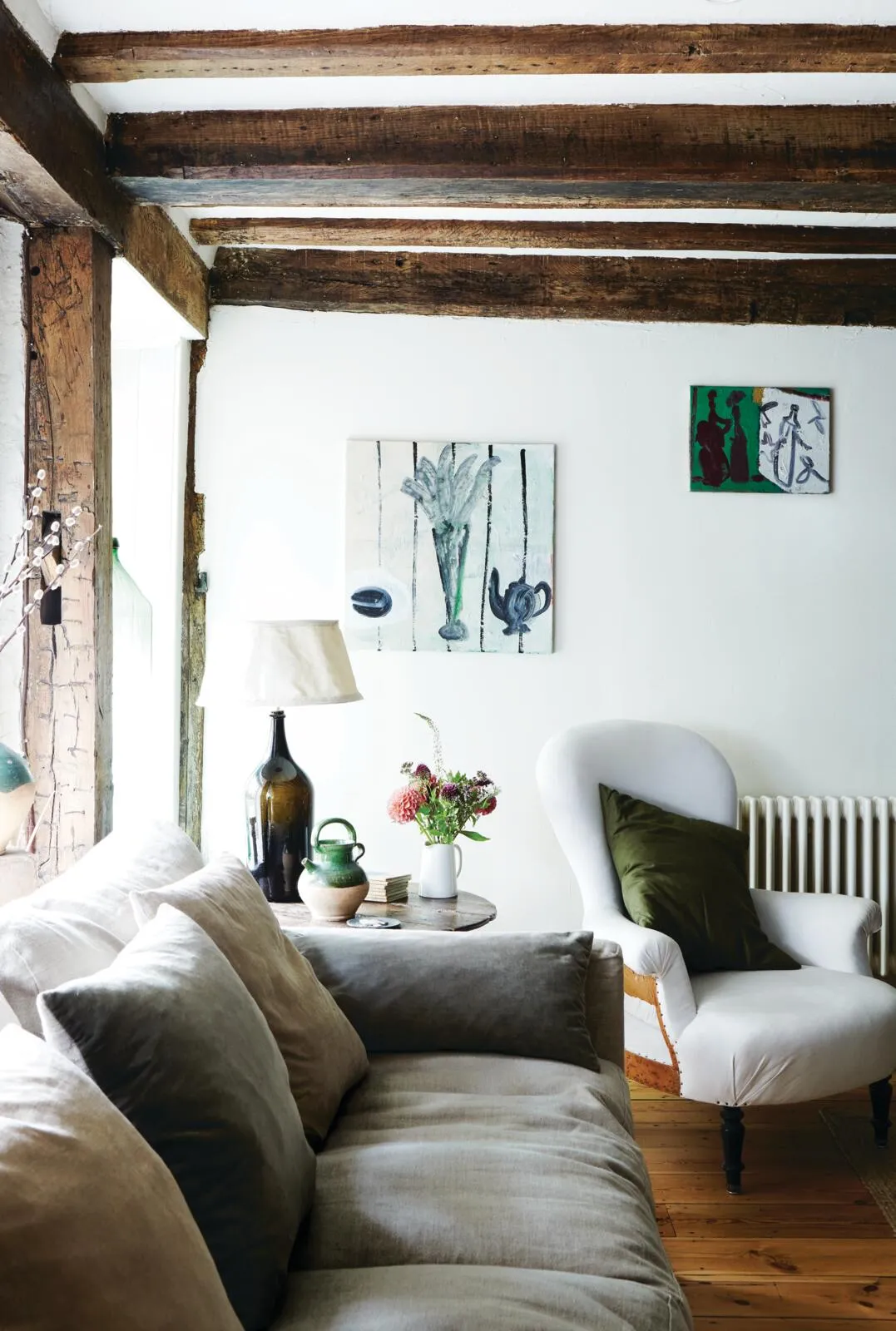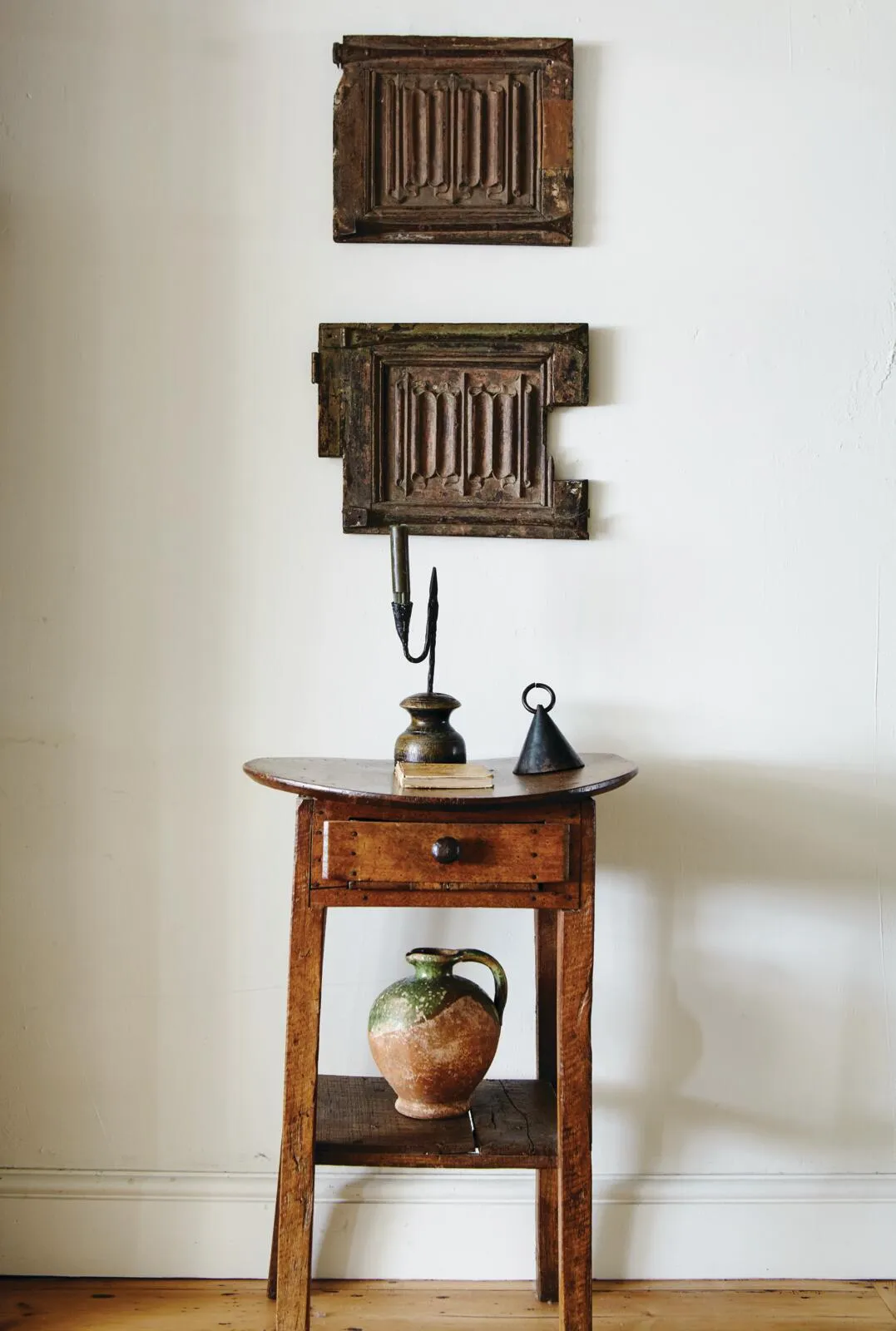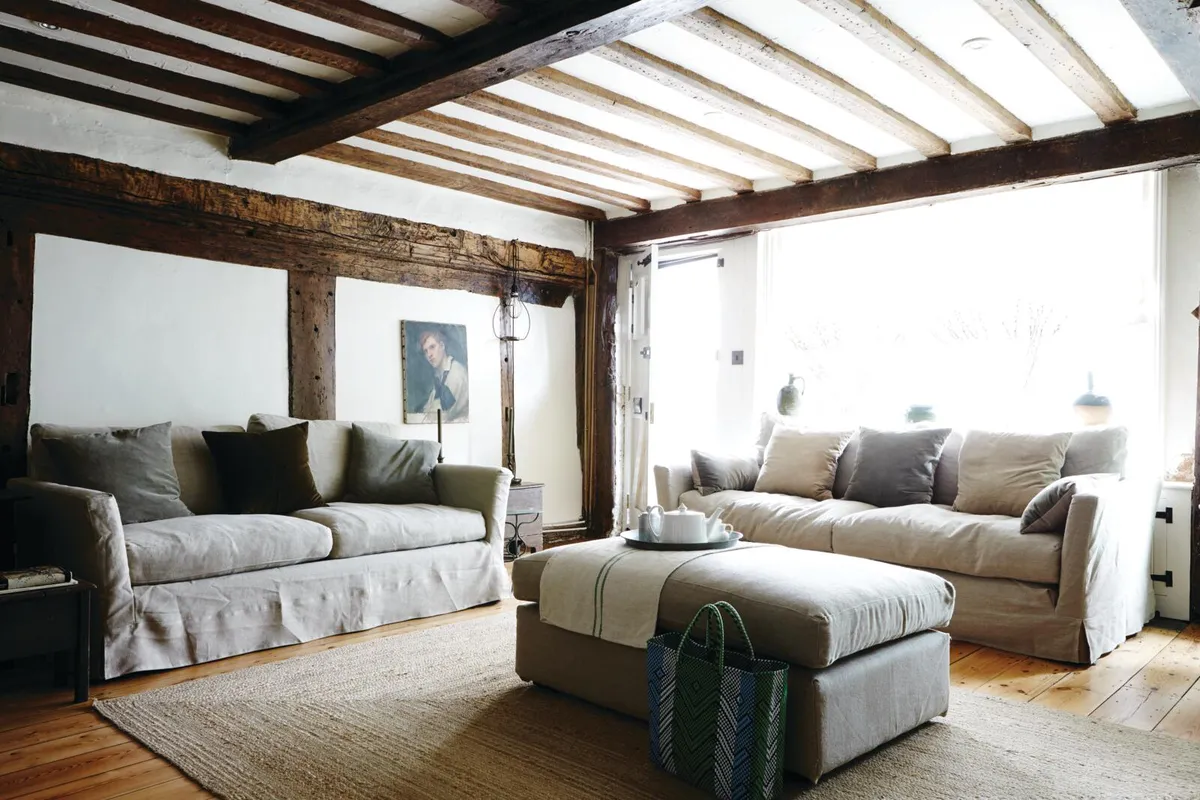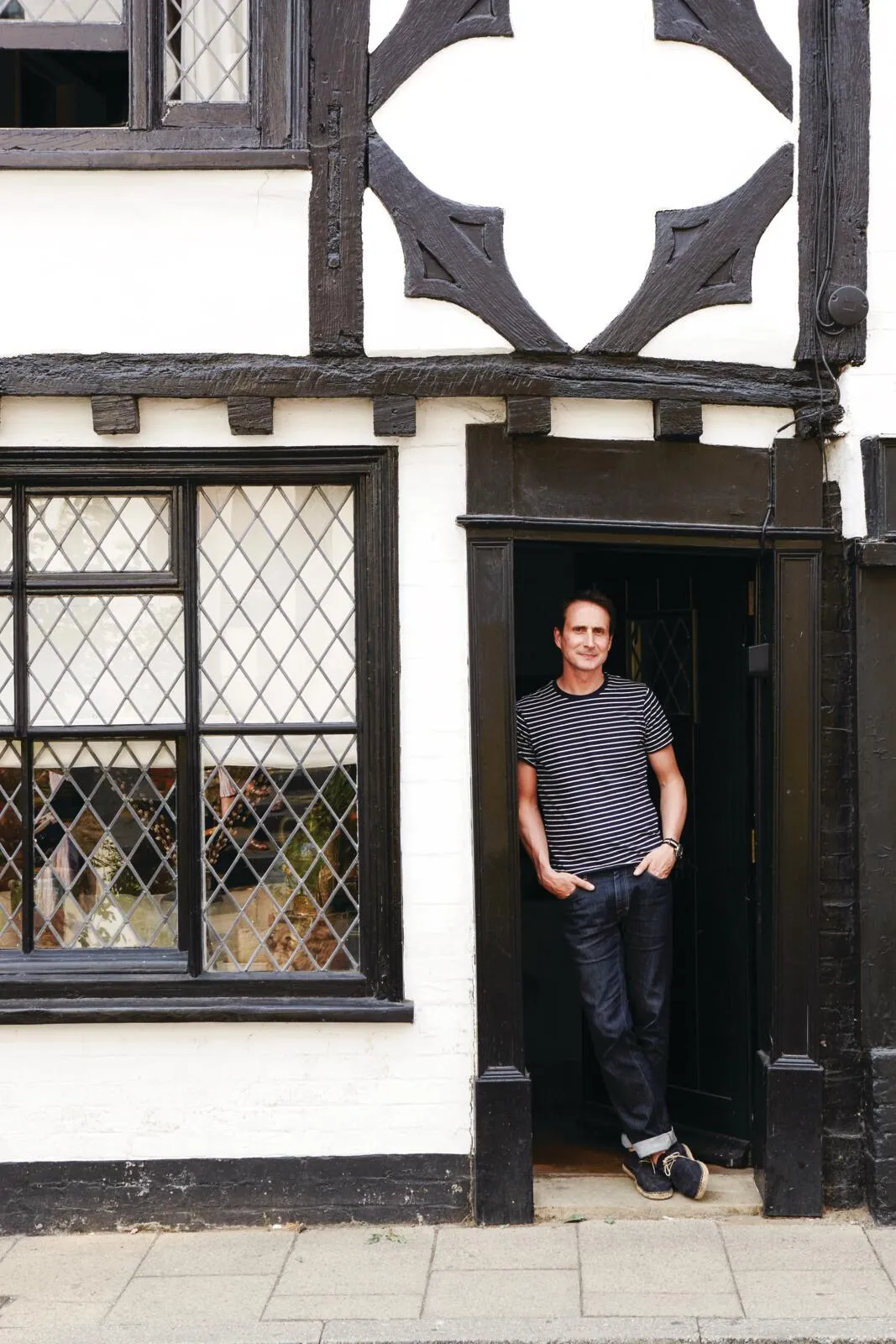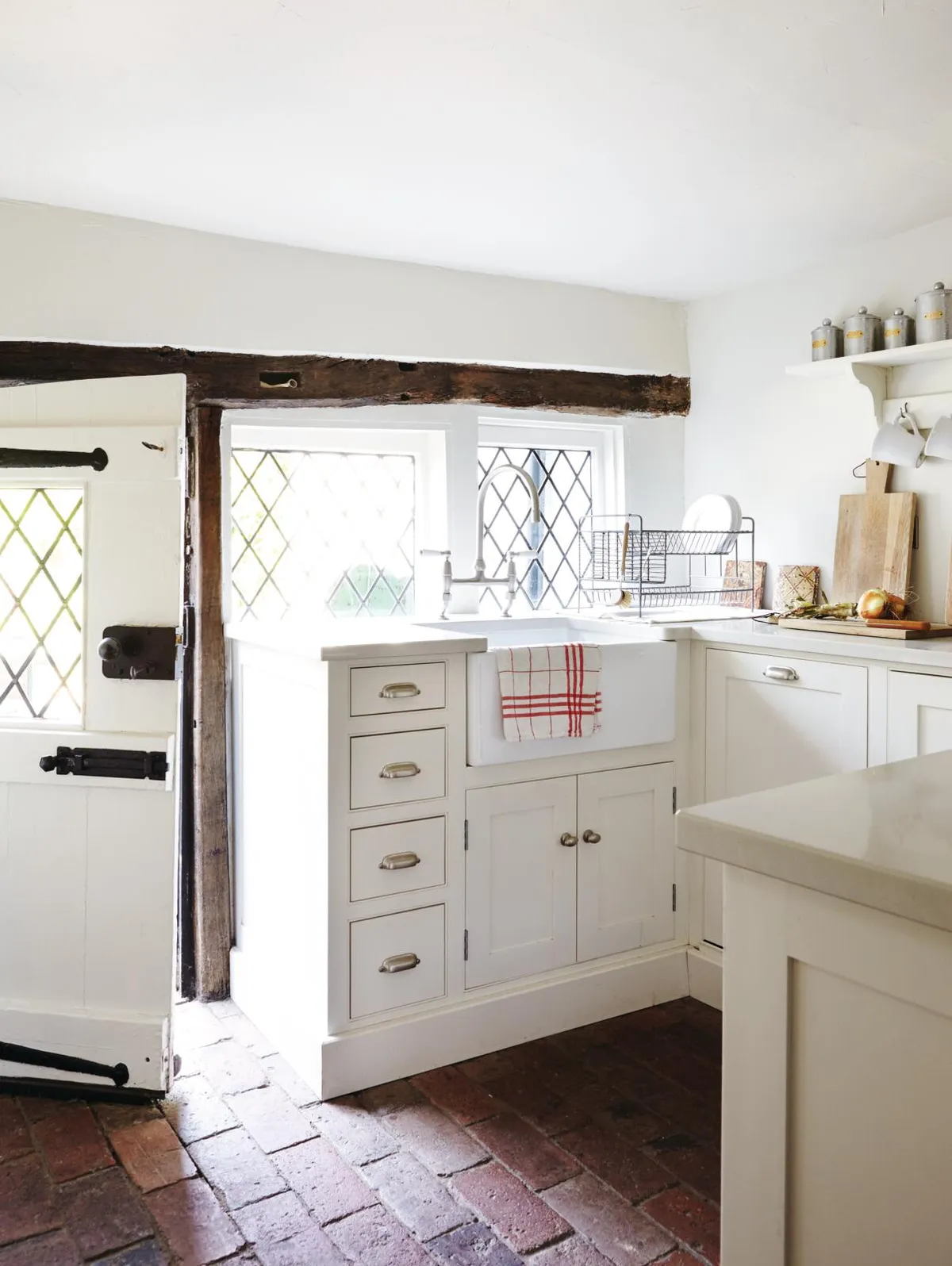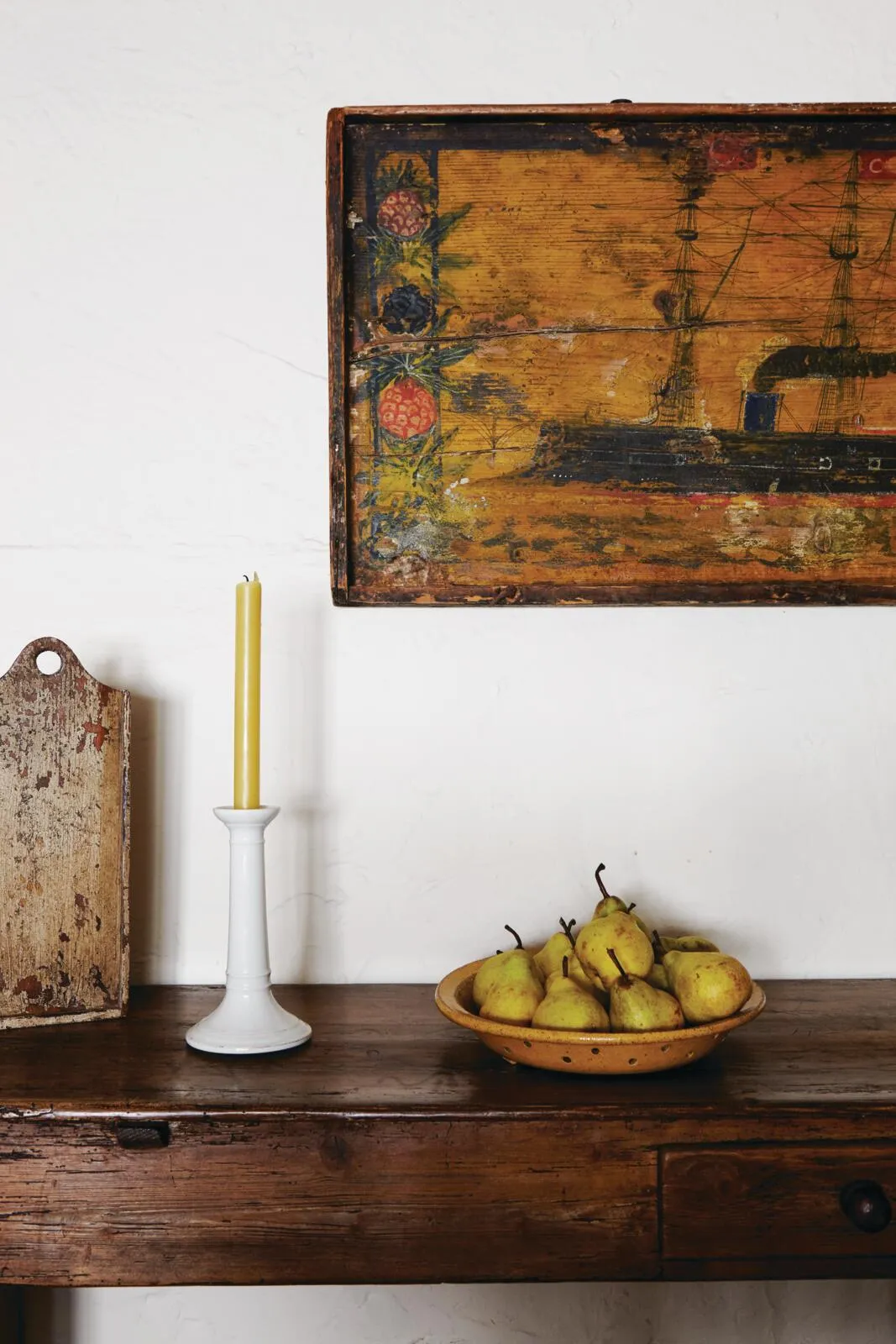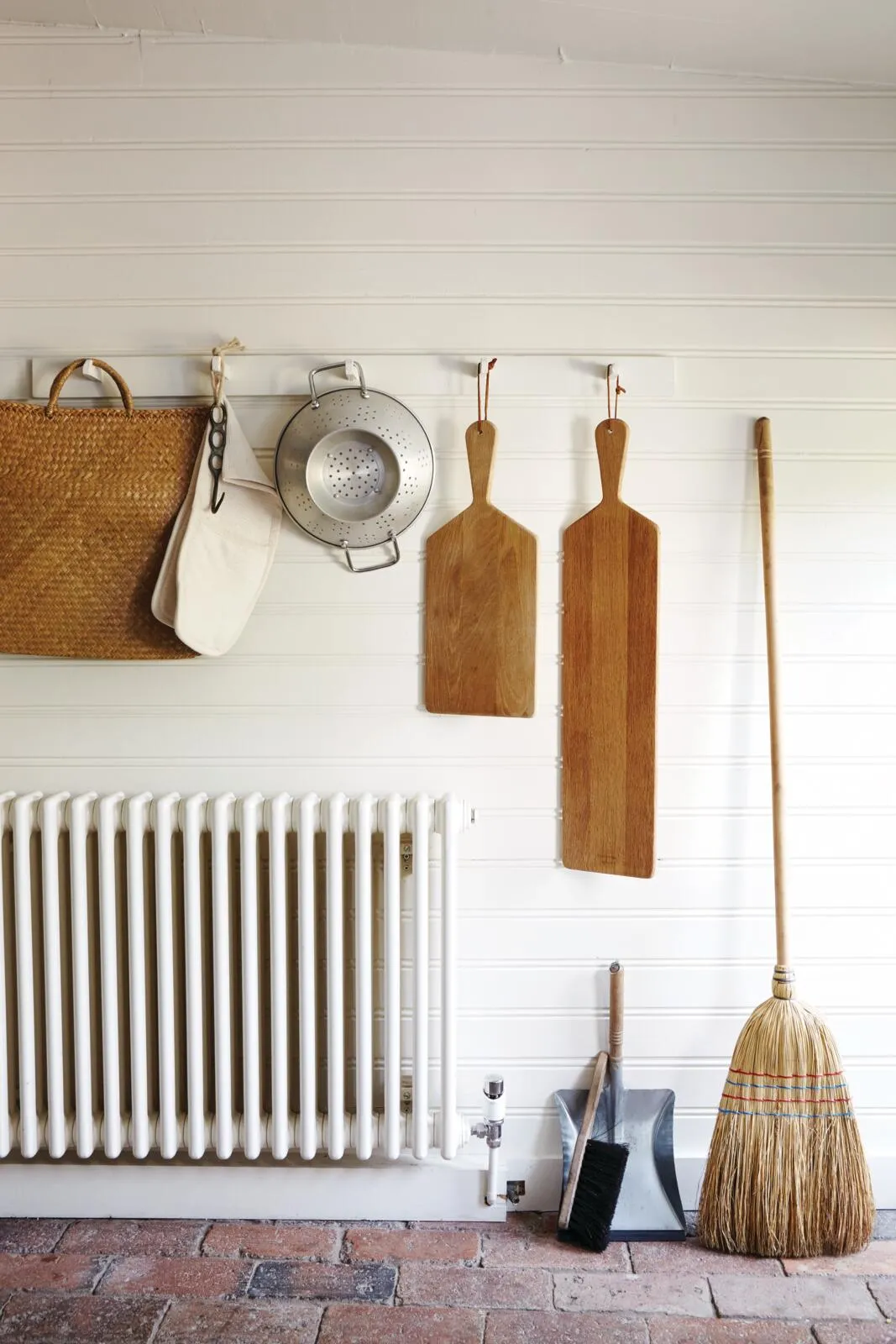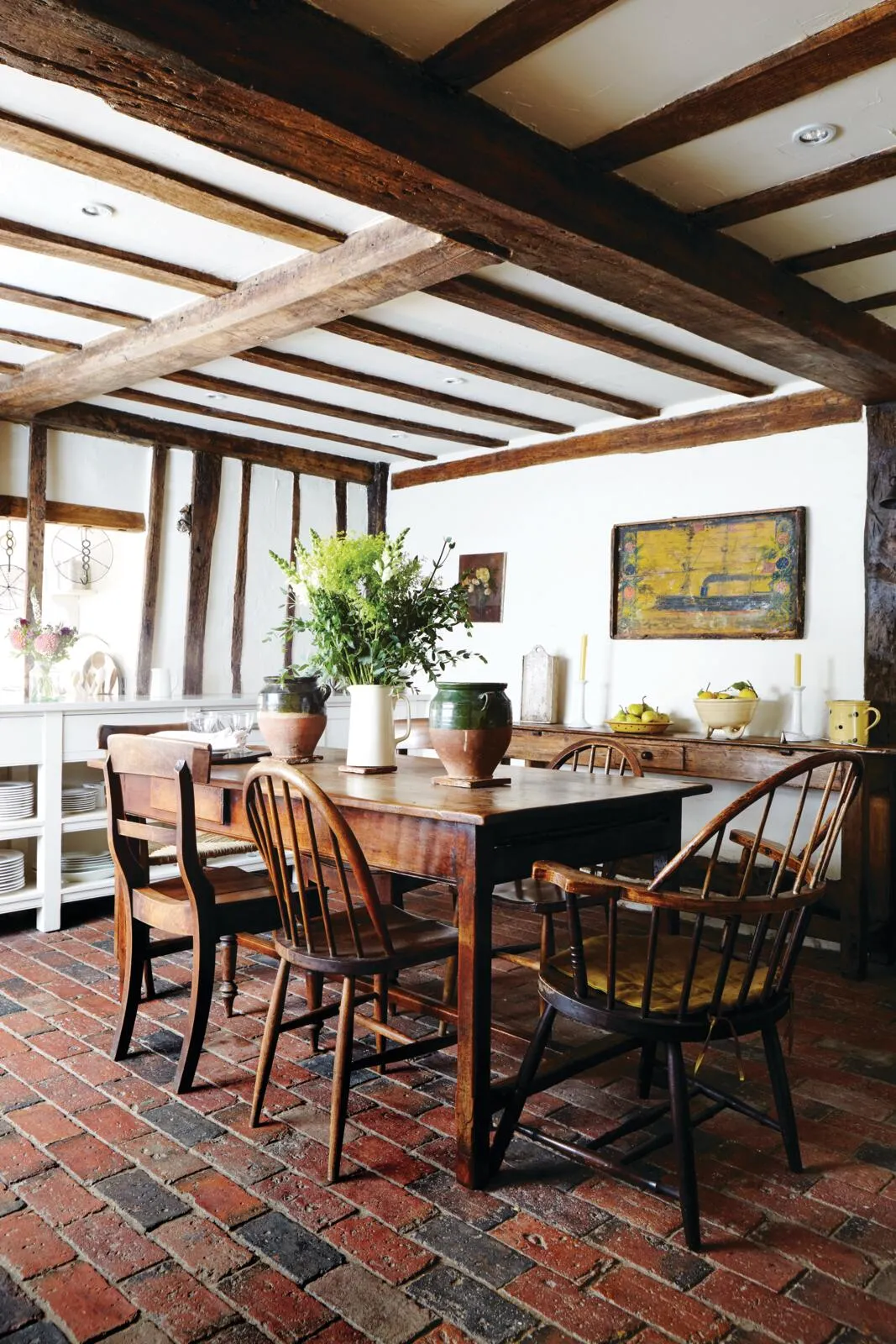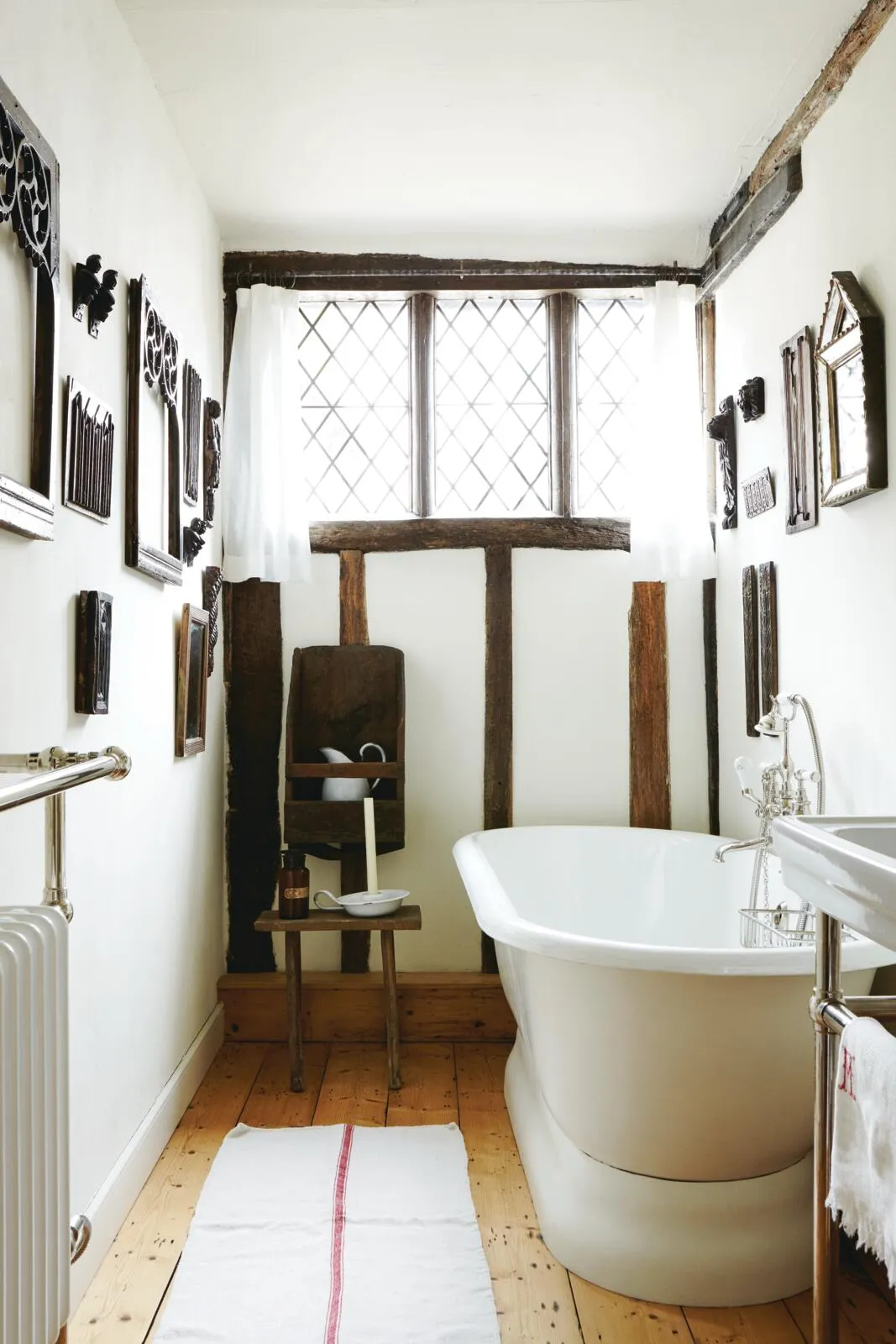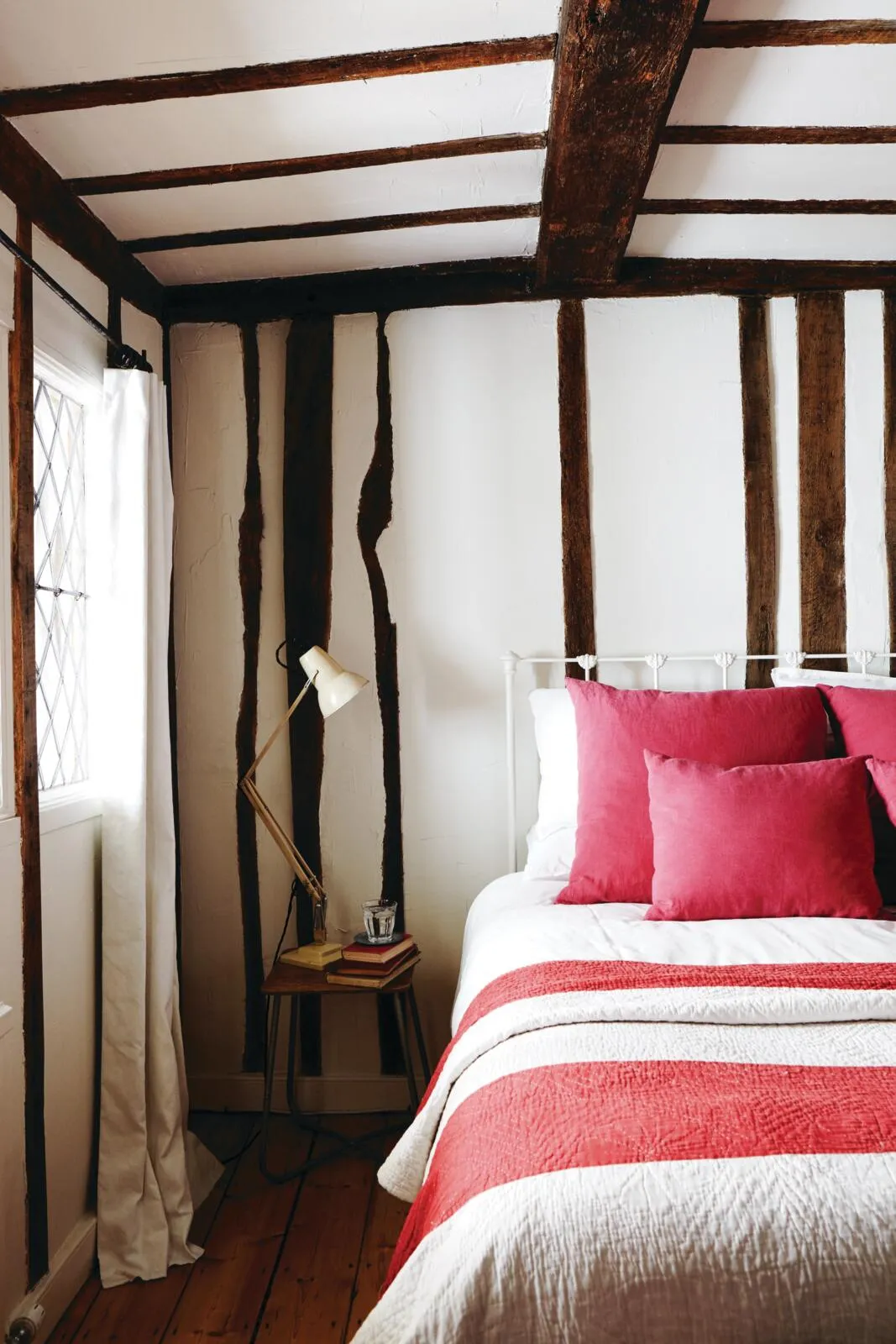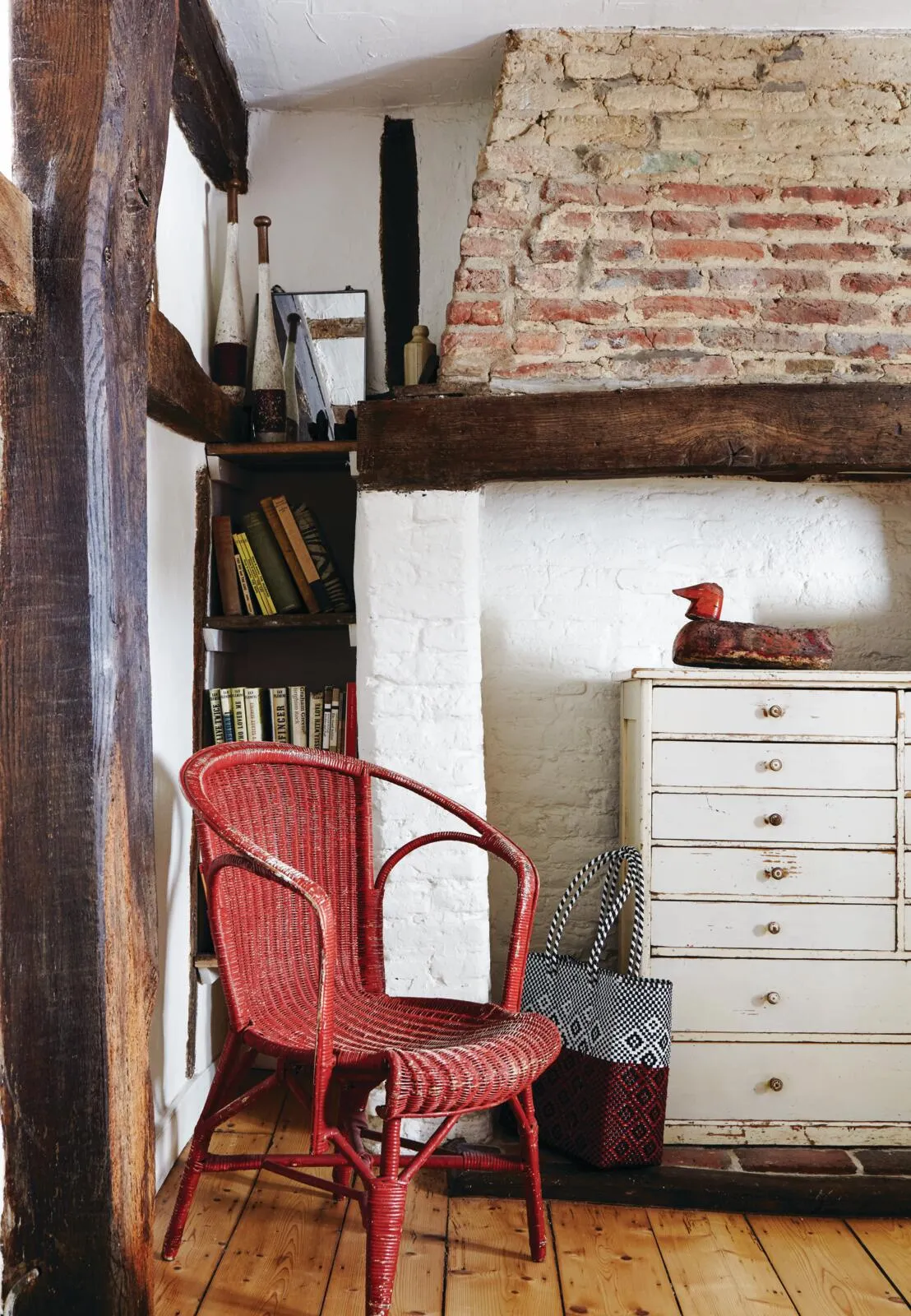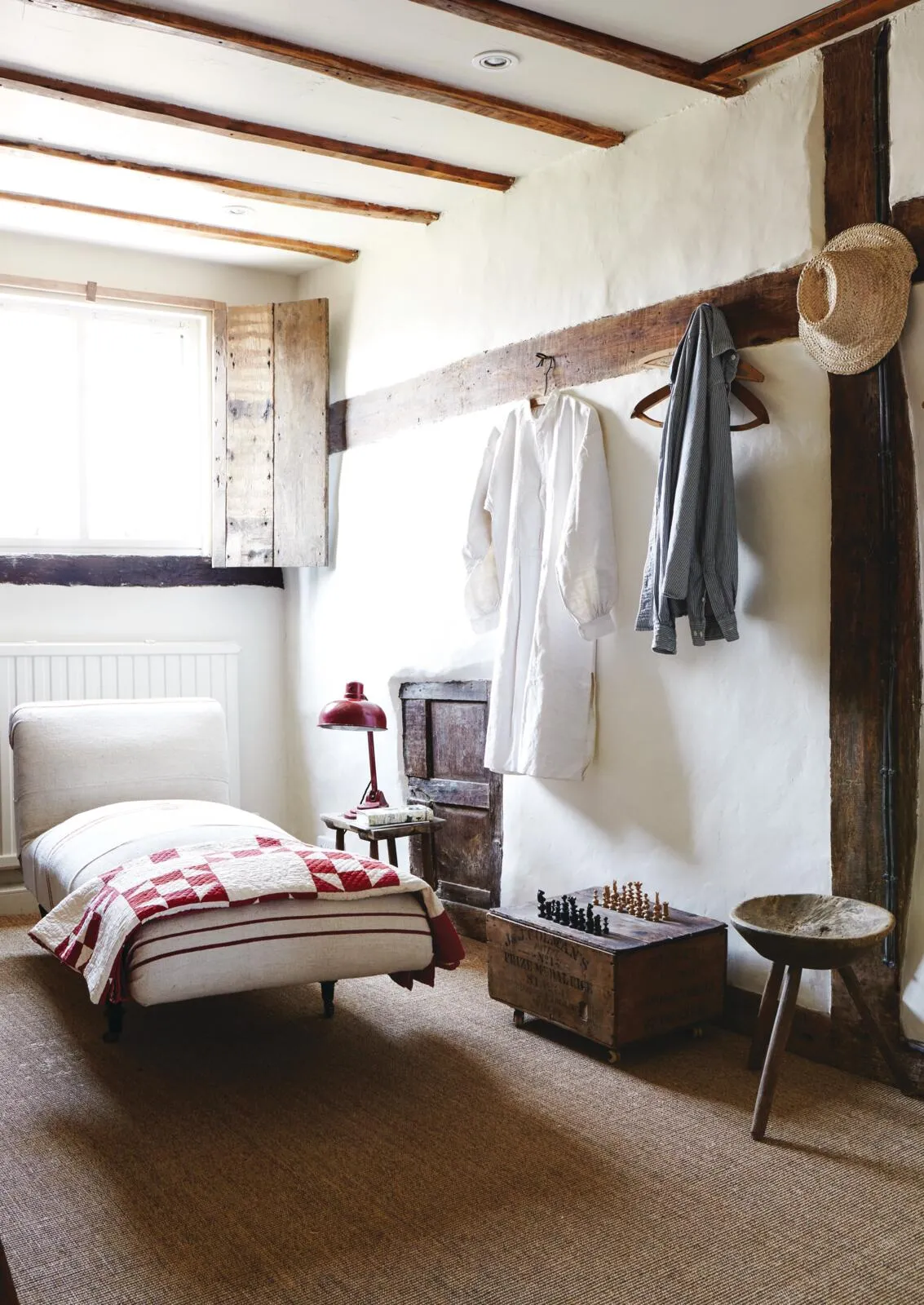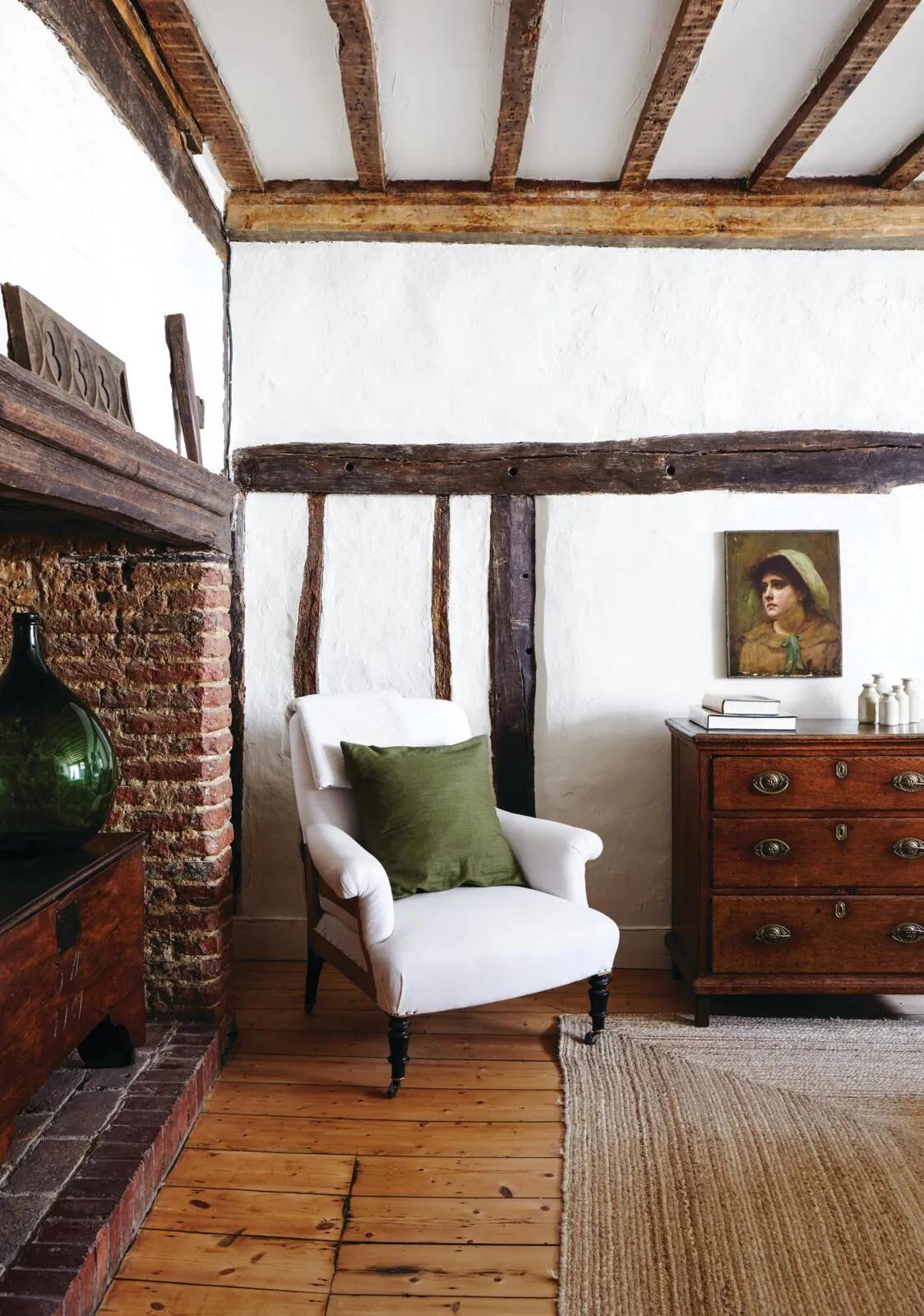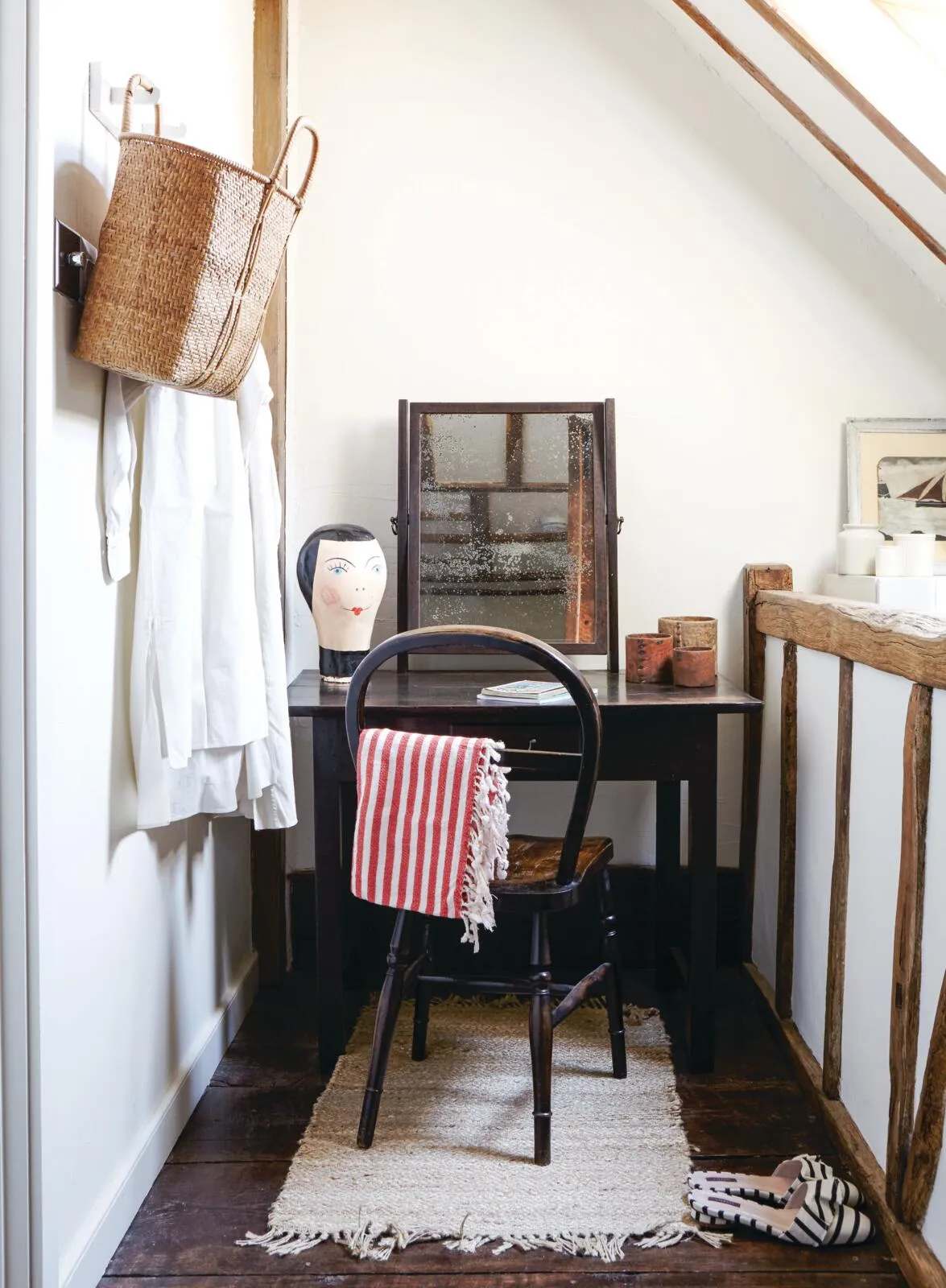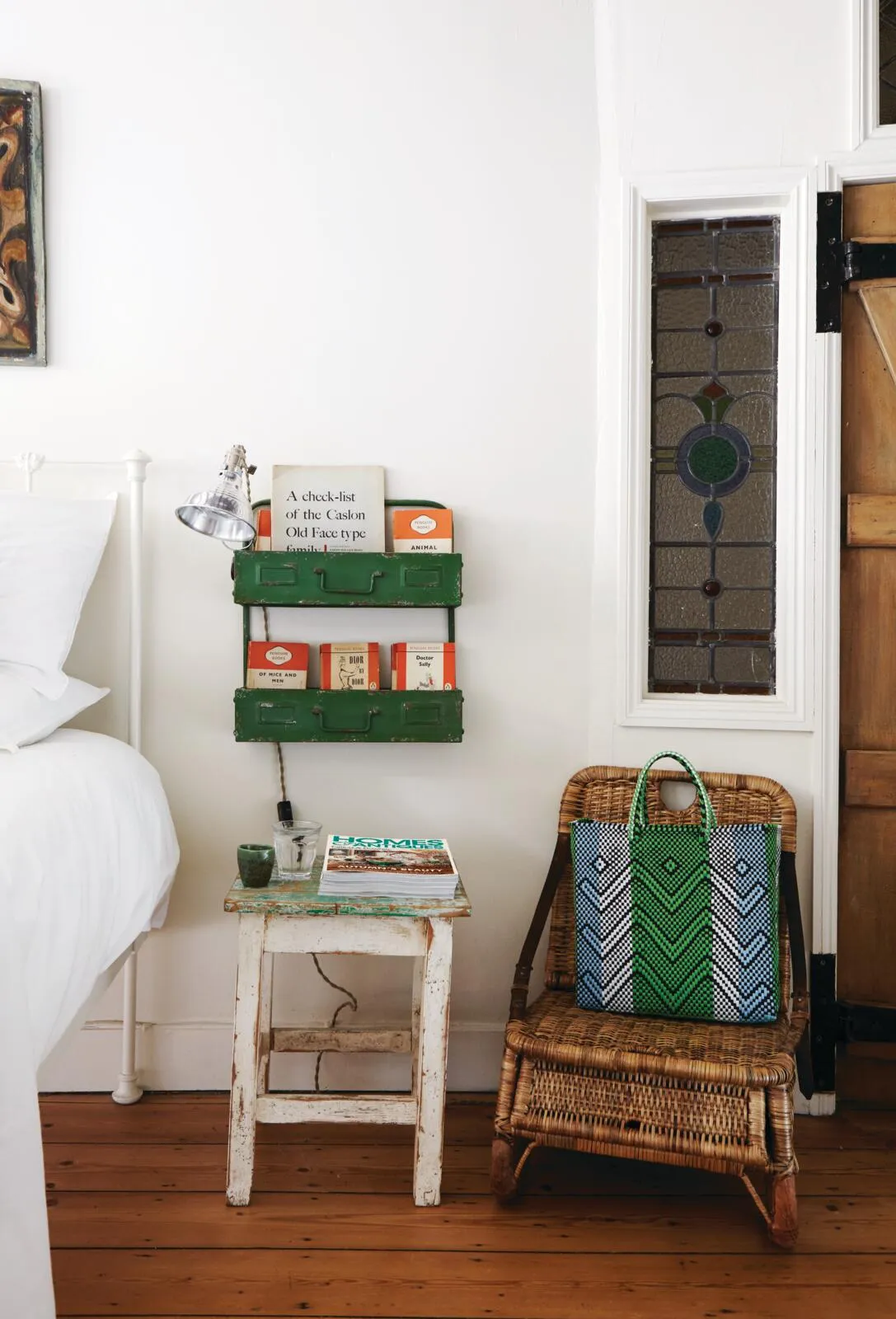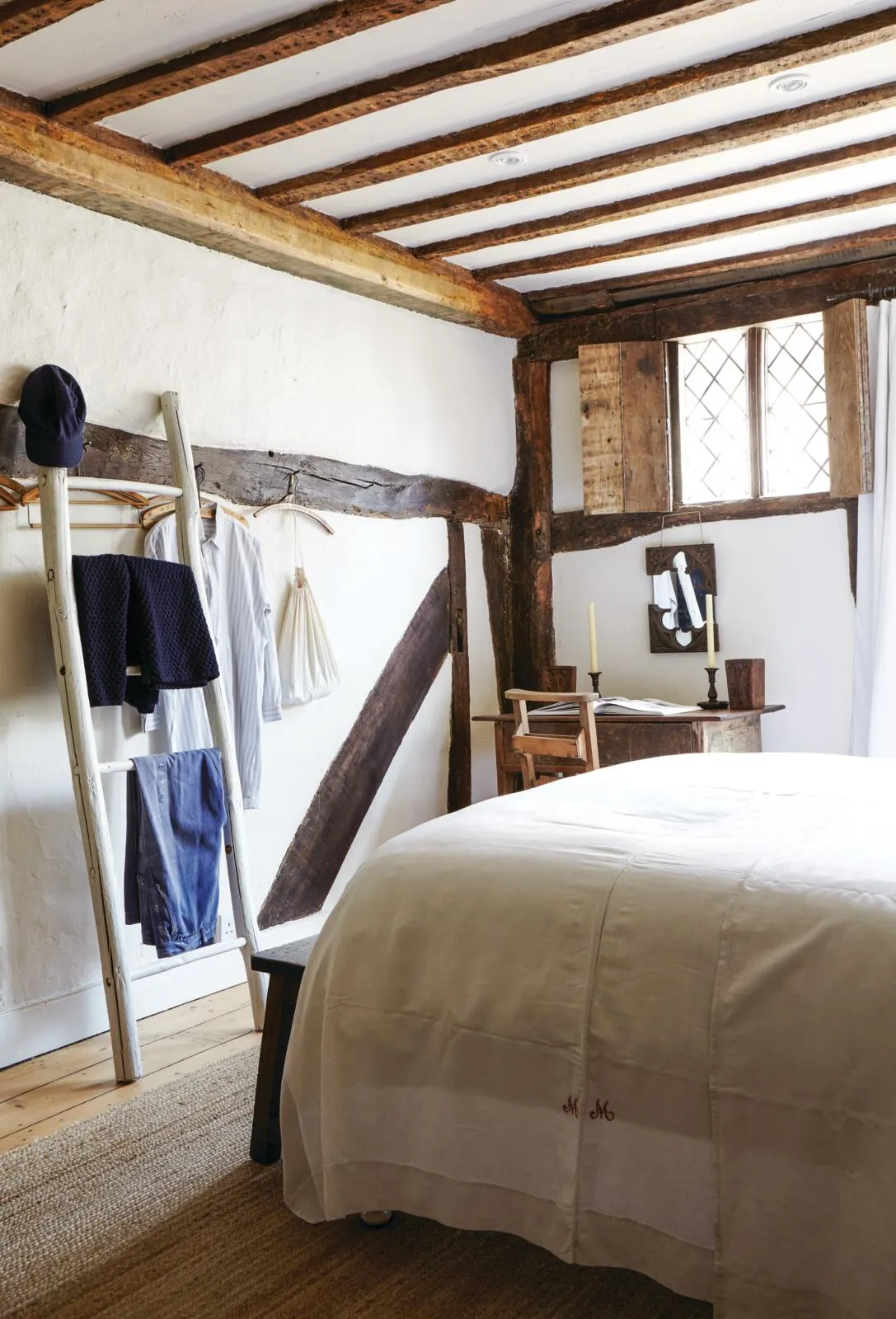Over the centuries, Barrie and Jo Stewart’s house has been home to tallow chandlers, sailors, wheelwrights, cordwainers and linen weavers. A wig maker, a hairdresser and a tailor have all set up shop here and used its leaded windows to display their wares. And there were doubtless plenty of off-the-record occupants. A smugglers’ door in the eaves that used to offer an easy escape into a neighbouring house provides a clue to some of the more covert goings on at The Mint, a 15th-century home on a winding street in Rye, East Sussex.
Once they moved in, Barrie and Jo became fascinated by the rich history of their home, particularly its past inhabitants, who provided much of the inspiration for the way the couple have styled their home.
‘When it came to decorating the rooms, we included references to the people who have lived here,’ explains Barrie. This is present in the small details, such as a vintage mannequin bust that is a subtle reminder of the wig maker, while beeswax candles are a nod to the ancient chandlers.
‘Using vintage textiles to add textures to the spaces was particularly appealing,’ says Barrie, who works in the fashion world. Old French sheets, softened with wear, have been hemmed by a local seamstress and hung as curtains. Striped mattress covers have been given a new lease of life as bed throws, and old linen shirts are hung as decorative items. ‘The quality of fine needlework on even the most everyday smocks and work shirts is incredible,’ he remarks.
But before Barrie and Jo could add these finishing touches, there was a lot of careful restoration work to do. ‘The aim was to bring the house back to life in an authentic style, so seeking out modern-day makers and craftspeople was part of that,’ says Barrie.
Early on they visited Ripley Forge & Fireplaces in nearby Robertsbridge where they found replacement backplates for the inglenook fireplaces. ‘We wanted to reinstate them as faithfully as possible and the Forge was like a graveyard of old fireplace ironware, which was just what we were looking for,’ Barrie explains.
They later returned to ask the blacksmith, John Ripley, to make curtain rods and rings for the house. ‘His designs combined a simplicity of shape with the slightly rough, visibly hammered finish that we wanted,’ he says.
The couple hired a local carpenter with experience working on listed buildings to make the bespoke kitchen and simple, rustic shutters from salvaged planks. ‘We wanted someone who understood the quirks of the building and would approach the work in a sympathetic way,’ Barrie explains.
Part of their painstaking restoration involved literally peeling back the layers of the house and its history. In the upstairs bathroom, the walls were taken back to the original wooden laths and reconstructed with increasingly fine layers of plaster, mixed with horse and goat hair.
‘At one point, you could see through to the room next door,’ recalls Barrie. ‘And because the exposed laths were made from chestnut timber, they filled the house with an amazing, rich smell.’
Local antiques dealers and restorers were also a great help to the couple. Once he saw their style and understood their aims, Darren Hadden of Antique Hadden kept an eye out for medieval and primitive oak furniture that would suit the house. The antiques business Strand House Interiors is very close by and co-owner Keith Banham also swiftly tuned in to their style, sourcing a chaise longue for them and putting them in touch with an upholsterer who re-covered it in vintage linen. A local furniture restorer seamlessly added inches to the legs of an 18th-century farmhouse table, and when a chest of drawers from Goose Home and Garden wouldn’t fit around the tight turn in the staircase, he carefully took it apart and then reconstructed it.
Meeting and working alongside such a raft of talented local artists and craftspeople has been enormously rewarding, Barrie believes. ‘These people have all played their part in helping us to bring The Mint back to life.’
